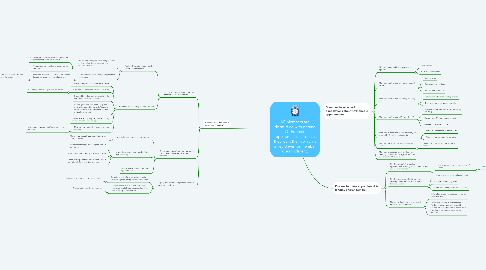
1. Average Booked to Seen is longer than standard
1.1. Routine appointment is longer than standard for most members
1.1.1. Routine Consult demand may be higher than necessary
1.1.1.1. Lack of treatment prior to coming to Ortho which significantly increases referral demand for consults
1.1.1.1.1. Primary Care providers too busy to treat all complaints that come up in a visit
1.1.1.1.2. Primary care may not feel empowered to treat Ortho
1.1.1.2. Non-referral demand may be higher than necessary
1.1.1.2.1. Members may ask for Ortho appointment instead of being seen by primary care
1.1.2. Routine Consult supply may be too low
1.1.2.1. Providers temporarily have extended leave
1.1.2.2. Budgeted for additional PA's not yet hired
1.1.2.2.1. Not enough space to put new providers
1.1.2.3. Demand based scheduling may limit the number of consults available
1.1.2.4. Return guardrails may not be in place or may be bypassed by provider's nurses (more return visits on the schedule than originally designed)
1.1.2.5. Consult availability may be crowded out by returns, preops and post ops
1.1.2.6. May not have enough providers to meet demand
1.1.2.6.1. Not enough space or staff to support new providers
1.2. Urgent appointment wait may be longer than operational target for some members
1.2.1. Urgent Consult supply may be too low
1.2.1.1. May not be enough designated spots for urgent consults
1.2.2. Urgent Consult demand may be higher than necessary
1.2.2.1. Inappropriate triage to an urgent; should be routine
1.2.2.2. Lack of treatment prior to coming to Ortho
1.2.2.3. Unrealistic expectations set up front around stat referrals from referring provider
1.2.3. Slots are taken up by non-urgent appointments
1.3. Surgery date may be longer than standard for some members
1.3.1. Sometimes lack of pre-op appointments before surgical opening dates (overbooks)
1.3.1.1. No open appointments on the schedule
1.3.2. Surgery schedulers may not be booking cases sequentially and thus wasting slots and pushing BTS farther out
1.3.2.1. Patient preference for more dates
2. Members have varied expectations about Orthopedic appointments
2.1. Members want multiple appointment options
2.1.1. Convenience
2.1.2. Fit with their schedule
2.2. Members want to see provider at nearest location
2.2.1. Convenience
2.2.2. Transportation hardships
2.2.3. Fit with their schedule
2.3. Members want to see provider previously seen
2.3.1. Established relationship with provider
2.3.2. Trust provider to diagnose correctly
2.4. Members want to see MD instead of PA
2.4.1. Don't know how a PA functions (partnering with MD)
2.4.2. May not trust PA to diagnose correctly
2.4.3. May see PA as delay in care
2.5. Members expectation of wait time may not align with KP wait time standards
2.5.1. Wait time compared to community
2.5.2. Wait time appropriate for condition
2.6. Members expect to be seen when they want to.
2.6.1. Payment for services and expect timely service
2.7. Members expectations set for them by referring provider (ACC/Urgent Care) that don't match Ortho guidelines
3. Process to make appointment is lengthy and/or complex
3.1. Call Center can't find available appointments resulting in multiple transfers and waits for callback
3.1.1. Very few appointments available to Call Center
3.1.1.1. See wait time cause
3.2. Call Center makes scheduling errors resulting in reschedules and longer wait time for patients
3.2.1. Inadequate training for call center staff
3.2.2. Complex scheduling rules
3.2.3. Call Center does not read/follow rules
3.3. No central line to contact preferred Provider's office directly
3.3.1. System has chosen centralized call center (more efficient)
3.3.2. Even when sending direct message to Provider's office, gets intercepted by centralized nursing team that makes next appointment without checking with provider
